Contax PC-Distagon 35/3.5 v Nikon 35/2.8 PC-Nikkor v Olympus 35/2.8 Shift
First published December 2007
Comparative data about 35mm shift optics is hard to find, but there’s no shortage of options: Nikon, Contax, Olympus and Pentax all have 35mm f2.8, f3.5 or f4 versions branded as shift, PC or Perspective Control. Canon previously offered a 35mm in FD mount, but revised the range with the introduction of the EF system so as to provide wider (24mm T/S), longer (45mm T/S) and tiltier designs. Of the three easily mountable on a Canon DSLR, the Zeiss has a peerless reputation – and price tag – but Nikon and Olympus users equally hail their on-brand contenders, so naturally I was curious to get beyond the hype to see how they really compare when used with full frame digital.
Much has been written about sensors’ allegedly sensitivity to angular light, and aberrations potentially caused by rays striking microlenses obliquely – and some tests have shown particular CA problems with certain shift lenses such as the Schneider 28mm f2.8 PC – but in truth these are not generic issues. Rather, they pertain to compromises made to accommodate such ‘adventurous’ designs that have simply been exposed to wider coverage and more intensive scrutiny in the digital era.
Beyond merely discovering which of the three was the ‘best’, I was seeking answers to other questions, too: does a shift lens exist at this focal length that can bear comparison with a top-of-the-line fixed focal with a smaller image circle? I hoped it would: one lens less in the bag. What exactly does the Distagon PC bring to the table to justify its stellar price? And can any of these 35mm-format lenses do the job of a medium format lens like the Pentax FA or Mamiya AF 35mm prime deployed via a shift adaptor?
Another question that was easily answered had to do with coverage: if you stitch together a pair of fully left- and right-shifted captures, how wide is that? As it turns out, the answer is about 80°. In other words, although the focal length of each lens is absolutely 35mm, because the image circle is closer to 60mm in diameter than the 43mm required to cover a 36x24mm frame, we really have in our hands something close to a medium format lens – in fact, the conversion of 35mm shift lenses for use on a Mamiya 645 will be the subject of a forthcoming article. And 35mm in 645 terms is pretty wide: roughly equivalent to a 21mm lens designed for the smaller format – but cropped horizontally.
When we reach for a wide angle lens, particularly as architectural and landscape photographers, what we’re looking for is commonly horizontal field of view (hFOV). More often that not, the loss of a little sky, or ceiling, isn’t critical. Thus, for applications where hFOV matters (interiors, for instance), it may be convenient to think of a 35mm shift lens as a 21-35mm zoom that gets better the wider you use it – assuming constant performance across the image circle – something I wanted to examine closely.
The reason for the increase in image quality should be evident without explanation. However, to quantify, consider that a single frame capture with a 5D and a Zeiss 21mm is 4,368 pixels wide and will pretty much resolve to the limits of the sensor at f5.6. A pair of shifted captures made by a Zeiss 35mm PC with the same camera and merged into one image will have a similar field of view but measure almost 7,000 pixels in width. However excellent the 21mm prime, it will never come close to the level of detail captured by two overlapping frames, even if the larger lens isn’t quite as sharp: we’re sampling the same scene with millions more bits of information.
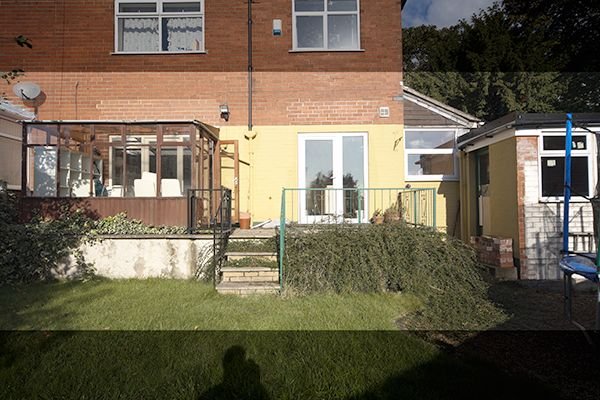
Here’s a familiar scene shot at 21mm / f11 with a Sigma 12-24mm at a distance of about 9m, with strips greyed out top and bottom corresponding to the field of view of a 35mm lens. When fully shifted, the 35mm will have much the same hFOV as the 21mm prime. Here we see the Olympus at f2.8. As you’ll see shortly, the Zuiko has the longest focal length of the three tested, so you’ll note that the coverage isn’t quite as wide as the 21mm.

Give the size of the image circle (about 30mm radius), it’s impressive – incidentally – to note that vignetting is well controlled by the Olympus shift lens. You’ll also see that we’ve had to extend our usual Zone system to accommodate the extra coverage of these lenses. Bear in mind that the troublesome Zone C (17-23mm radius) that creates so many problems for wide angles is well inboard for a shift lens, creating high expectations of ‘corner’ performance when movements are not used. A 36x24mm frame is marked here in red.
A few paragraphs ago, I claimed that an OK 35mm lens with a big image circle would run rings around a 21mm prime. Well, here’s 100% crops from the above to illustrate the point.


Obviously the f11 centre frame performance of the Sigma 12-24mm is far from being the last word in resolution or colour fidelity, but however exquisitely the 90,000 pixels on the left are rendered, they will never come close to the nicely drawn 263,725 pixels on the right (Canon 5D and Nikon 35mm PC at f11).
Hopefully that’s got your attention. Having established why you might want to use a 35mm shift lens – without even discussing the job of perspective correction for which they were designed (which you’ll either find indispensable or irrelevant) – we can move on to looking at which shift is the shiftiest of them all.
All images shot using a 36x24mm 'full frame' sensor: a Canon 5D mounted on a locked down Manfrotto/Bogen 058 tripod (minimum extension) with exposed spikes dug into moist turf and a Kirk Enterprises Arca-Swiss ball head. Images were exposed at ISO100 with mirror lock-up via Canon electronic remote release with custom settings applied (Saturation +1, Contrast -5, Sharpness +1) and processed using Phase Capture One v3.7.7. In C1, Extra Shadow and positive Midtone Contrast and Saturation were applied, plus default capture sharpening prior to development into 8-bit ProPhoto RGB TIFFs. In Photoshop, a single pass USM of 100 / 0.4 / 3 was applied prior to profile conversion to Adobe RGB and export using BoxTop ProJPEG. Light came from a local star. Despite provocation, no cats were injured in the making of this test.
Mechanical Specs
Nikon PC-Nikkor 35mm f2.8 PC
 This is the latest and widely considered to be the best wide PC-Nikkor available. Whereas Canon’s shift and perspective control lenses are positioned at 24mm and 45mm, Nikon offers PC lenses at the relatively similar focal lengths of 28mm and 35mm. Based on a slower (f3.5) eight-element version of the 1960s, the most recent model features seven elements, Nikon’s NIC coatings and close-range correction. Only the most recent variants (like this one) have multi-coloured depth of field scales.
This is the latest and widely considered to be the best wide PC-Nikkor available. Whereas Canon’s shift and perspective control lenses are positioned at 24mm and 45mm, Nikon offers PC lenses at the relatively similar focal lengths of 28mm and 35mm. Based on a slower (f3.5) eight-element version of the 1960s, the most recent model features seven elements, Nikon’s NIC coatings and close-range correction. Only the most recent variants (like this one) have multi-coloured depth of field scales.
Weighing in at 320g, measuring 66mm in length and having a 52mm front filter size, the Nikon PC35 feels compact and shapely in the hand, inspiring confidence in its build quality with all metal construction and positive, smooth movements. It has a number of unique features: it’s the only lens of its type to stop down as far as f32, and the manual aperture control is a strange, stepless two-ring limiter affair with broad (precise) spacing. Ergonomically, it’s quite pleasing – reminiscent of a large format lens.
The lens has the usual two controls: detents for 360° rotation, enabling horizontal and vertical movements relative to the sensor orientation, and the primary shift. Nikon opted for a simple ‘one-way’ mechanism that simply winds the lens away from the sluggishly geared control knob. On the down side, this makes for very slow movements; on the upside, stitching is quickly accomplished by winding the lens out to its maximum travel (left), and rotating the collar 180°, without further ado. Though Nikon states an 11mm range of movement, in practice, this seems to net out to a little less: more like 10mm and a smidgeon.
The sample tested here was one of the latest variants, fitted with a Fotodiox Pro Nikon-Canon adaptor.
Olympus Zuiko Shift f2.8 f=35mm (not Zuiko 35mm Shift 1:2.8)
 Note well the order of the lens description: I learnt too late its significance. Though Olympus only ever made one version of this lens for the OM mount, the vast majority are single coated, but designated in the most fiendishly subtle way. Many of the later multi-coated units were bought by Sinar for use on their early digital MF systems, and are marked ‘Sinaron’ on the front lens barrel. All Sinarons are MC lenses and pretty much guaranteed to be top-notch samples. The lens tested here, however, is single coated, and was kindly loaned to us for the review by MXV Photographic (genuinely good people to deal with: not just because they let us borrow this copy). However, it quickly became apparent that it struggled with flare and internal reflections, which set us to investigating the MC situation. Historically, Olympus found all kinds of sneaky ways to flag up the coating used on their lenses: sometimes the key is to look for extra letters; sometimes the omission thereof. If you want a multicoated 35/2.8, here’s the knack: look for the inscription “ZUIKO SHIFT 35mm 1:2.8”. If the running order of the words is different, or if it says “f = 35mm”, it’s single coated – and most are. The other giveaway, of course, is a purple/green (MC) or neutral/yellow (SC) reflection.
Note well the order of the lens description: I learnt too late its significance. Though Olympus only ever made one version of this lens for the OM mount, the vast majority are single coated, but designated in the most fiendishly subtle way. Many of the later multi-coated units were bought by Sinar for use on their early digital MF systems, and are marked ‘Sinaron’ on the front lens barrel. All Sinarons are MC lenses and pretty much guaranteed to be top-notch samples. The lens tested here, however, is single coated, and was kindly loaned to us for the review by MXV Photographic (genuinely good people to deal with: not just because they let us borrow this copy). However, it quickly became apparent that it struggled with flare and internal reflections, which set us to investigating the MC situation. Historically, Olympus found all kinds of sneaky ways to flag up the coating used on their lenses: sometimes the key is to look for extra letters; sometimes the omission thereof. If you want a multicoated 35/2.8, here’s the knack: look for the inscription “ZUIKO SHIFT 35mm 1:2.8”. If the running order of the words is different, or if it says “f = 35mm”, it’s single coated – and most are. The other giveaway, of course, is a purple/green (MC) or neutral/yellow (SC) reflection.
The lens itself is tiny, in finest Zuiko tradition: 310g in weight and 59mm in length, with a petite 49mm front filter size. Its friction-based movements are typically very smooth: though be warned that they do fail over time and through extended use to the point where they drift and become sloppy. The rotating ansd shifting mechanism is by far the quickest and most useful, however. Simultaneous horizontal and vertical movements are possible, enabling part of the image circle to be mapped that would be inaccessible to any other lens of its type. Additionally, vertical shifts in landscape orientation can be extended to almost 14mm. Naturally the 60mm image circle (Olympus plausibly claims 62mm) precludes horizontal movements greater than 10mm in landscape mode, but the extra functionality is appreciated here, and cements Olympus’ reputation as shift lens masters in tandem with their unique 24mm f3.5.
This single coated sample was tested using a CameraQuest Olympus OM / Canon adaptor. A repeat test will be conducted with a multicoated sample soon.
Contax Zeiss 35mm PC-Distagon f2.8
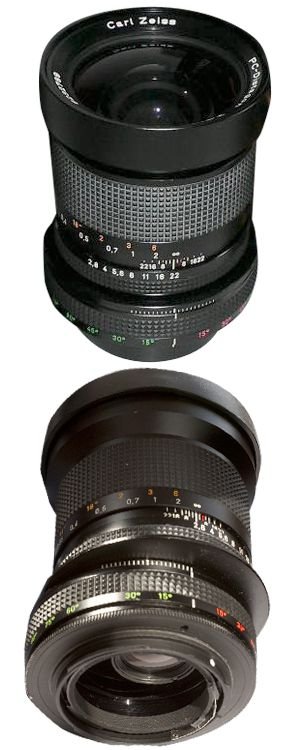 Typical 2007/8 price: $1600-1800
Typical 2007/8 price: $1600-1800
You’ll know this is a special lens the moment you pick it up. It takes a big 86mm filter on the front and weighs more than the Nikon and Olympus PCs combined (740g). Optically, it has the full Zeiss pedigree: T* coatings, CRC and every trick they knew about extracting maximum performance from wide angles. Whereas all the 21mm Distagons were made in Japan, all the Contax PC lenses I’ve seen were made in West Germany and were identical: they never even made an MM version of this lens. At least it makes a buying the right version easy enough: one size fits all. Perhaps Zeiss’ funny German way of saying: ‘But how can we improve on perfection?’
The minimum focus is 30cm – identical to all the lenses here tested – though each has a slightly different shift mech. Contax opted for a rotating collar that is disengaged for movement by upward pressure, combined with a friction shift to access the 10mm movements available. Swapping between this and the silky-smooth Zuiko, the Distagon feels a bit like a victim of its own robustness: the movements on this sample were on the heavy side of positive. Bulletproof, but not quick.
This mint minus sample was tested with a Cameraquest adaptor.
Flare & Ghosting
Nikon 35mm f2.8 PC-Nikkor

At f8, the Nikon’s 9-bladed aperture renders an attractive star, well controlled halation and the merest trace of internal reflection. An excellent performance.
Olympus Zuiko Shift 1:2.8 f=35mm (Single Coated)
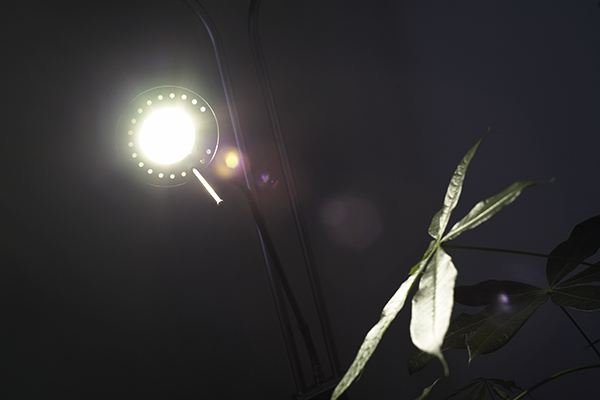
Both the Olympus and the Zeiss feature curved 6-blade apertures that render in-focus point light sources as unappealing mush at f8. In terms of flare resistance, performance isn’t too bad, but expect serious blob invasion if you fail to track down a multi-coated sample. Later experimentation with an MC sample proved enlightening: this was the worst I could provoke:
Olympus Zuiko Shift 35mm 1:2.8 (Multi Coated #107641)

Not exactly class-leading, but a big improvement that makes the MC variant at least better suited to night photography. Note the nice big pale impression of the hexagonal aperture in the foreground.
Contax Zeiss 35mm PC-Distagon f2.8

Apart from the concentric ‘orbital ring’ halation evident, the Zeiss Distagon displays well-mannered handling of point light sources, and keeps internal reflection to a minimum. Shame about the aperture blades however: no stars at f8. On balance, I think we’d have to give joint honours in round one to the Nikon and the Contax.
Resolution (f2.8)
Zone A/B (at f2.8)
 |
 |
 |
Nikon 35mm PC Nikkorat f2.8 (centre) |
Olympus 35mm Shiftat f2.8 (centre) |
Contax PC Distagonat f2.8 (centre) |
The section sampled here straddles Zones A and B, so it would lie just outside the very centre of a single frame capture. The Zeiss delivers outstanding contrast right from the off, and superb resolution. If this seems familiar, perhaps you’ve compared Contax, Olympus and Nikon lenses before: classically, Zeiss lenses outresolve the rest of the system centre frame at most working apertures; Nikon, and especially Olympus, lenses need a good few stops to warm up, as the rest of the test will illustrate.
Zone C (unshifted 35mm frame corner) at f2.8
 |
 |
 |
Nikon 35mm PC Nikkorat f2.8 (Zone C) |
Olympus 35mm Shiftat f2.8 (Zone C) |
Contax PC Distagonat f2.8 (Zone C) |
Though we’re out in the middle of a fully left-shifted capture here, this sample is in Zone C, where the corners of a 36x24mm frame lie. I’m not sure I can think of any wide angle lens (these just about qualify) capable of drawing such a well-detailed corner wide open as the Zeiss PC-Distagon – just fabulous. In typical fashion, the Olympus suffers from strong spherical aberration at its widest aperture and its performance rapidly declines away from Zones A and B. The Nikon makes a more respectable showing, and if you use the lens unshifted, this is impressive for a wide open corner – but both are a long way from the standard set by the Contax.
Zone D (fully shifted corner: 29mm from frame centre) at f2.8
 |
 |
 |
Nikon 35mm PC Nikkorat f2.8 (Zone D) |
Olympus 35mm Shiftat f2.8 (Zone D) |
Contax PC Distagonat f2.8 (Zone D) |
This asks a lot of a very wide medium format lens: fully shifted, wide open – and yet surprisingly, despite the aberration and loss of contrast, the Zuiko’s wobbly focal plane locks in a very well resolved D Zone way out here in the image circle badlands. Remind you of the 18mm Zuiko, perhaps? Softer than the 16-35II and Zeiss 18mm centre frame, but dynamite in the corners? High hopes, then for its stopped down performance. It’s also a very credible result for the PC-Distagon, actually useable wide open at full shift. Evidently the PC-Nikkor just wasn’t designed to work this way.
Resolution (f4)
Zones A/B (centre frame) at f4
 |
 |
 |
Nikon 35mm PC Nikkorat f4 (centre) |
Olympus 35mm Shiftat f4 (centre) |
Contax PC Distagonat f4 (centre) |
One stop down, there’s little to add centre frame: all the lenses are a little sharper centre frame but the Olympus and Nikon clearly lag behind the lovely looking Distagon.
Zone C at f4
 |
 |
 |
Nikon 35mm PC Nikkorat f4 (Zone C) |
Olympus 35mm Shiftat f4 (Zone C) |
Contax PC Distagonat f4 (Zone C) |
. . . but the Nikon makes great strides toward narrowing the gap: maintaining a very consistent level of performance through Zones A, B and C by f4, giving Leica-scaring ‘corners’ unshifted. The Olympus is truly a curate’s egg still: the focal plane meanders in and out of sync, looking as bad as this in regions of Zone C.
Zone D at f4
 |
 |
 |
Nikon 35mm PC Nikkorat f4 (Zone D) |
Olympus 35mm Shiftat f4 (Zone D) |
Contax PC Distagonat f4 (Zone D) |
You may already have noticed how impressively these lenses handle light fall-off: clearly the image circle of each is bigger (or more sharply defined) than the notional 60mm. The story here is much as it was wide open: the Zeiss further refines its Zone E rendition, exceeded for resolution (if not for contrast) by the Olympus and somewhere at the bottom of the heap the Nikon continues to strive for an acceptable image.
Generally, please note that the differences you’re seeing only become evident when you closely juxtapose near-identical captures: when I review the Olympus image in isolation, it’s not immediately evident that Zone C flaws exist, but the Nikon, whose behaviour is opposite in Zones C and E, makes it clear that something is amiss. Viewed on a print, the Olympus would appear to render the scene much more ‘smoothly’, without sudden bumps and dips in resolution: at f4, everything’s a bit mushy. Strangely, many users of this lens would claim that the image looks fine . . . because nothing stands out as sub-standard until you make the comparison. By contrast, you would definitely notice ‘soft corners’ with the Nikon because they are so unlike the centre of its image circle. The same problem often afflicts Zeiss lenses which tend not to be optimised for wide aperture Zone C excellence. Making these tests is great for disillusioning one about lenses one was previously perfectly happy with.
Resolution (f5.6)
Zones A/B at f5.6
 |
 |
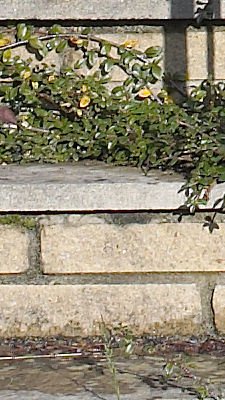 |
Nikon 35mm PC Nikkorat f5.6centre) |
Olympus 35mm Shiftat f5.6 (centre) |
Contax PC Distagonat f5.6 (centre) |
As you by now would expect, the Zeiss looks particularly sweet centre frame two stops down: it clearly resolves more than the other two, even allowing for the slightly stronger lighting it benefits from. The Olympus is beginning to emerge as a distinct second best, with the Nikon not really improving much from its wide open performance.
Zone C at f5.6
 |
 |
 |
Nikon 35mm PC Nikkorat f5.6 (Zone C) |
Olympus 35mm Shiftat f5.6 (Zone C) |
Contax PC Distagonat f5.6 (Zone C) |
. . . although we still see the Zuiko suffering from a poorer Zone C. In many ways Nikon lenses tend to behave like cut price Zeiss optics: cool/neutral colouring, very high centre frame performance, best well stopped down, often flaky in the outer image circle at wide apertures. It’s just that this is a vintage Zeiss: one of the best, and it’s just sharper and punchier than the Nikon, which is relatively sharper than the Olympus in this part of the frame.
Zone D at f5.6
 |
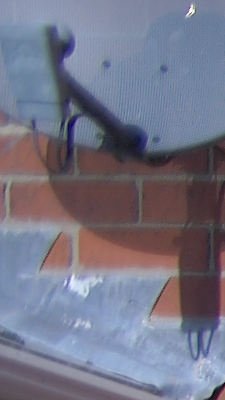 |
 |
Nikon 35mm PC Nikkorat f5.6 (Zone D) |
Olympus 35mm Shiftat f5.6 (Zone D) |
Contax PC Distagonat f5.6 (Zone D) |
Something tells me that the Nikon is never going to render a sharp corner at a sensible working aperture – perhaps that’s why we have the inclusion of f32 as an option! Based on my prior experience with Olympus lenses, I think we could be slowly building to a barnstorming f11 finale.
Resolution (f8)
Zones A/B (centre frame) at f8
 |
 |
 |
Nikon 35mm PC Nikkorat f8 (centre) |
Olympus 35mm Shiftat f8 (centre) |
Contax PC Distagonat f8 (centre) |
Although the gap is narrowing predictably, the Distagon retains a clear advantage in resolving power, followed in order of ability by the Olympus and Nikon.
Zone C at f8
 |
 |
 |
Nikon 35mm PC Nikkorat f8 (Zone C) |
Olympus 35mm Shiftat f8 (Zone C) |
Contax PC Distagonat f8 (Zone C) |
The Zuiko isn’t quite clear of its Zone C blues, but its closer to the pace than it was at wider apertures. Needless to say, when used unshifted we’re looking at a very high level of performance here, which isn’t too tall an order for a 35mm prime.
Zone D at f8
 |
 |
 |
Nikon 35mm PC Nikkorat f8 (Zone D) |
Olympus 35mm Shiftat f8 (Zone D) |
Contax PC Distagonat f8 (Zone D) |
The all-conquering PC-Distagon is now seriously challenged by the Olympus shift. By f8, the Zuiko’s evenness of rendition makes it almost as attractive as the Zeiss, whose corners appear to be slightly softer than the centre. In this company, the Nikon makes a very poor fist of Zone D: you’d be unwise to shift this lens more than about 5mm if f8 is where you need to be.
Resolution (f16)
Zones A/B at f16
 |
 |
 |
Nikon 35mm PC Nikkorat f16 (centre) |
Olympus 35mm Shiftat f16 (centre) |
Contax PC Distagonat f16 (centre) |
With diffraction a major influence on resolution at f16, the Olympus and Zeiss shift lenses start to look at bit the Nikon. Still the Zeiss gives that little bit more than the others in Zones A and B, though.
Zone C at f16
 |
 |
 |
Nikon 35mm PC Nikkorat f16 (Zone C) |
Olympus 35mm Shiftat f16 (Zone C) |
Contax PC Distagonat f16 (Zone C) |
The stronger microcontrast of the Distagon’s T* coating has pulled a little more information out of the wood sections here, but there’s the merest fraction more in the shadows in the Olympus capture, which in turn is now comfortably ‘sharper’ than the PC-Nikkor.
Zone D at f16
 |
 |
 |
Nikon 35mm PC Nikkorat f16 (Zone D) |
Olympus 35mm Shiftat f16 (Zone D) |
Contax PC Distagonat f16 (Zone D) |
At 10mm shift, the outermost parts of Nikon’s Zone D are still a no-show and the additional stop has done nothing to improve the corresponding behaviour of the Olympus or the Contax lens: both are still eminently useable at this aperture, and produce unimpeachable, monster stitched files, but f11 can probably be considered the pinnacle of their performance: you’ll only stop down this far to slow the shutter or gain a little extra depth of field. At least it’s safe to do so . . . .
Resolution (f22) & Chromatic Aberration
Zone D at f22
 |
 |
 |
Nikon 35mm PC Nikkorat f22 (Zone D) |
Olympus 35mm Shiftat f22 (Zone D) |
Contax PC Distagonat f22 (Zone D) |
The rot is really starting to set in at this aperture, and everything begins to look exactly the same thanks to diffraction effects, but I was curious to see whether the Nikon ever shaped up in Zone D . . . and it doesn’t. The same story is visible across the frame: misty specs.
Distortion
I didn’t shoot a distortion target with these lenses because in practice they all behaved so well, and so similarly, that there seemed little point. They all have a little simple centre frame barrel distortion flattening out without nasty positive kinks at the corners. In the majority of cases, unless you’re working at very close range, you won’t even need to correct for it.
Chromatic Aberration
Once again, in practice, the lateral CA one expects after working with 24mm and 28mm shift lenses is less of an issue. It crops up discreetly in some instances when using the Nikon and Olympus, but the Zeiss again shows its pedigree (and justifies its cost) by controlling these aberrations rather better . . .
 |
 |
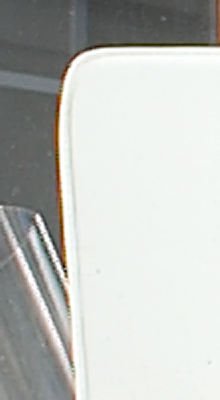 |
Nikon 35mm PC Nikkorat f8 (Zone C) |
Olympus 35mm Shiftat f8 (Zone C) |
Contax PC Distagonat f8 (Zone C) |
Please note that these samples have been resampled to 200% using PS Bicubic Sharper. In common with straightforward non-shifting lenses the aberrations worsen slightly as you move away from the centre of the image circle. Right out on the edge of Zone D (about 29mm from the middle), this is about as bad as it gets:
 |
 |
 |
Nikon 35mm PC Nikkorat f8 (Zone C) |
Olympus 35mm Shiftat f8 (Zone C) |
Contax PC Distagonat f8 (Zone C) |
A nice mix of different aberrations to play with there, but on the whole a fairly commendable display given the demands we’ve placed on them: first place to the Zeiss, and joint second for the Nikon and Olympus.
Conclusion
Complicated lenses, time-consuming test, simple conclusion: don’t buy the Nikon. If you can afford it, buy the Contax – if you can’t, get the Olympus.
The Zeiss PC-Distagon really is special: it does everything brilliantly – but it is expensive. No more expensive relative to its competition than, say, a Mark Levinson amplifier, but it just won’t be on the shopping list for many users. If you need the best 35mm shift lens there is, there’s no question that the Zeiss is it. Having said that, the first thing I did after crowning the Zeiss was to attempt to knock it off its throne with the Zörk PSA-mounted Pentax FA35mm . . . more on that later.
The Olympus is a great little lens, though, and the nicest of the bunch to use: it’s the only one that connects to the camera without the shift mechanism trying to rotate – no arthritis-inducing contortions are required when demounting it. Also, it shifts 13mm in the vertical, which is a real boon. However, for optimal results, it is strictly limited to f11/f16. But in its sweet spot, with the sun in the right place, it comes so close to the Zeiss that you might wonder whether the extra spend is a wise investment. And if you can find a multicoated one, you might not even have to worry about pointing it at lights . . . .
Tested apart from this pair, you might like the Nikon: the flare resistance and distortion and pretty good, and it’s not bad at f8–f16, but you do not want to shift this lens into the Forbidden Zone, which I would suggest is about 7mm even at optimal apertures. This sample, at least, just fell apart optically at this point.
So it’s got to be the Contax: crisp like nothing else designed for 35mm, impeccable distortion control and flare resistance, peerlessly CA-corrected, resolution to spare for that 22MP sensor upgrade, and all the Zeiss trademark colour and microcontrast. It’s the balance of strengths and virtues that justifies its price tag, not just the ‘sharpness’.
A question now arises, however, as to how the biggest fish in the little pond compares to the biggest fish in a bigger pond: will the CZ35 PC outperform the finest medium format ultrawide: the tragically discontinued Pentax 645 FA 35mm? We’ll be finding out . . . .
